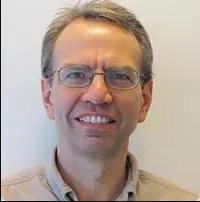Visiting Scholars
Visiting Scholars
| Visitor | Period of stay | Office | Email address | Research interests | |
|---|---|---|---|---|---|
John Carpenter |
1 April 2025 to 3 April 2025 | Dr. John Carpenter joined the ALMA Project in September 2015 as the ALMA Observatory Scientist. John received his PhD from the University of Massachusetts-Amherst, and was a James Clerk Maxwell Fellow at the University of Hawaii and an Postdoctoral Scholar at the California Institute of Technology (Caltech). While at Caltech, John conducted research using the Owens Valley Radio Observatory (OVR... |
 |
Past Visiting Scholars
| Visitor | Period of stay | Research interests | |
|---|---|---|---|
|
Rohan Potham Naidu Yale-NUS College |
19 Jun 2017 to 14 Aug 2017 | Cosmic Reionization, High-Redshift Extragalactic Astronomy, Machine Learning Applications in Astronomy, Supernova Cosmology |
 |
|
Weichen Wang (王炜辰) Johns Hopkins University |
19 Jun 2017 to 23 Jun 2017 | understanding galaxy formation, dust geometry and star formation features using large extragalactic surveys conducted on the Hubble Space Telescope (CANDELS, 3D-HST, etc). |
 |
|
Zhi-Yu Zhang(张智昱) University of Edinburgh/ESO |
14 Jun 2017 |
 |
|
|
Zheng Zheng (郑政 ) University of Utah |
12 Jun 2017 to 16 Jun 2017 | cosmology, large-scale structure, galaxy formation and evolution, and Lyman-alpha radiative transfer. I also have broad interests in other fields of astrophysics. |
 |
|
Pau Amaro-Seoane Max-Planck Institute for Gravitational Physics |
9 Jun 2017 to 17 Jun 2017 | stellar dynamics, LIGO/Virgo/LISA black holes, data analysis and gravitational-wave search algorithms, planetesimal dynamics, scalar fields and collisional dark matter, and GPU computing |
 |
|
Nan Li University of Chicago |
9 Jun 2017 | Machine Learning and Gravitational Lensing, interactive Lens Modeling, Simulations of Time Delays in Galaxy Scale Lensing |
 |
|
Xu KONG (孔旭) University of Science and Technology of China |
8 Jun 2017 | stellar population synthesis and its application, two dimension properties of low-z/high-z galaxies, formation and evolution of low-z/high-z galaxies, dust attenuation and the IRX-beta relationship |
 |
|
Daniel Harsono Leiden University |
5 Jun 2017 to 15 Jun 2017 | testing of radiative transfer tools for ALLEGRO ALMA arcnode, accretion disk formation around low-mass stars |
 |
|
Zachariah Etienne West Virginia University |
1 Jun 2017 | Compact binary inspirals & mergers: Simulations in fully dynamical spacetimes, Black hole accretion, New techniques for performing compact object and compact binary simulations, Gravitational wave astrophysics & data analysis |
 |
|
Ian Philip Czekala KIPAC Fellow at Stanford University |
24 May 2017 to 28 May 2017 | young stars, protoplanetary disks, pre-main sequence evolution, and exoplanets |
 |
